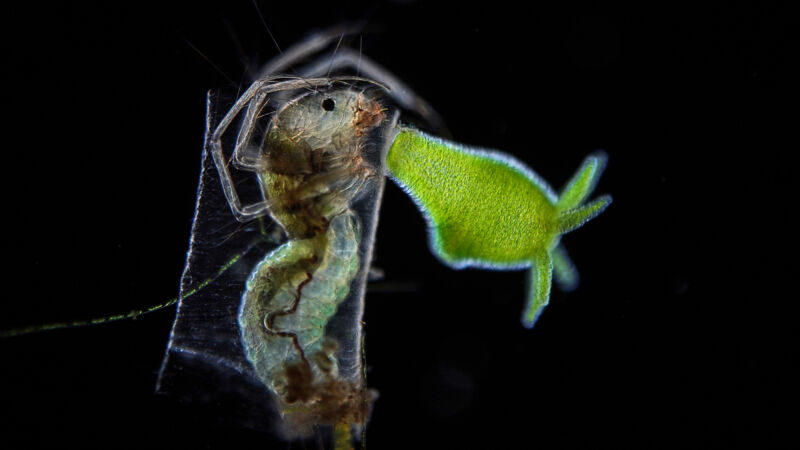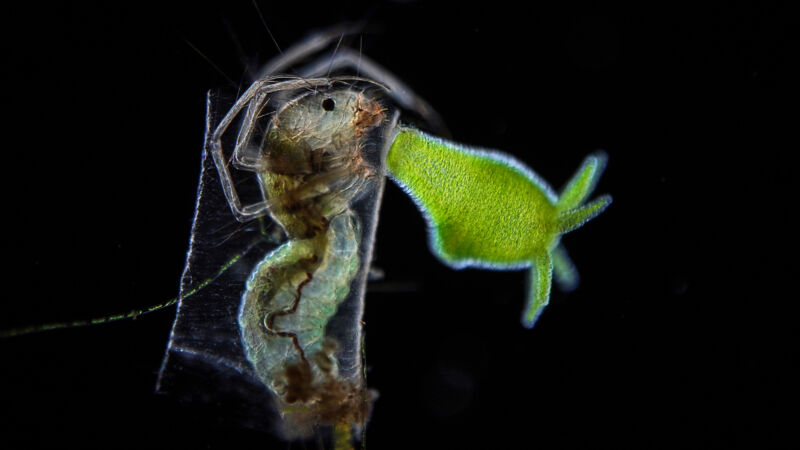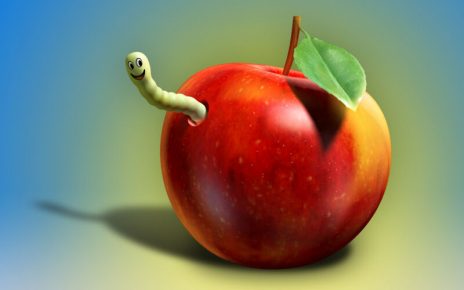
Enlarge / A small cnidarian called a hydra (green) has attached itself to the cocoon of a caddisfly. (credit: Yen Fook Chew)
Microscopy is essential to many areas of science. We use it to look at everything from the small devices we fabricate to the tiny structures inside cells. And microscopy wouldn’t function without input from many areas of science. Chemistry helps with stains, dyes, and sample preparation. Physics determines what’s possible with different forms of optics. And fields like biology and geology tell us which samples can give us valuable information. Combined, these tools give us a nearly infinite suite of options for looking at the world of the small.
With the right choices among those options, a microscope can do far more than just advance science; it can create objects of art. Each year, when Nikon releases the results of its annual microscopy competition, we struggle for new superlatives to describe the images. This year is no exception. So rather than struggling with words, we’ll get straight to the images.
The rock. We tend to think of microscopes as examining living matter, revealing details that are critical to understanding cells and the organisms built from them. But chemicals and minerals also have details that aren’t always visible to the naked eye and can be critical to their behavior as well. We’ve always loved close-ups of crystals and rocks, and this year’s collection of images contains a surfeit of them.





